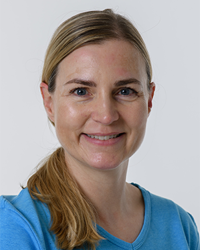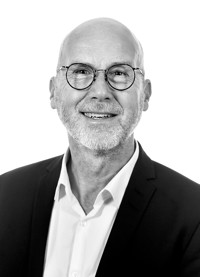Teledermoscopy in general practice
Skin cancer and melanoma affect many patients in Denmark and cause significant morbidity and high costs for the healthcare system. Patients who have a suspicious skin change will most often go to their general practitioner (GP) to have it examined. It is, however, difficult to diagnose skin cancer, especially in the early stages, and there are a number of benign skin changes that can resemble skin cancer.
PROJECT PERIOD
Start: October 2018
End: October 2021
Today, the general practitioner can examine skin change using a dermoscope that acts as a magnifying glass with light and magnifies skin changes so the doctor can look into the top layer of the skin. It increases diagnostic safety. However, dermoscopy can only be used to make the correct diagnosis if the doctor is adequately instructed and trained in the use and interpretation of findings. Therefore, an assessment by a dermatologist is often needed. It is possible to attach a dermoscope to a camera or a mobile phone and take dermoscopy images, which can be sent to a dermatologist for evaluation, so-called teledermoscopy (TDS).
AIM
The overall purpose of the PhD project was to investigate – from different angles – the implementation of teledermoscopy of suspicious skin changes in general practice in the Region of Southern Denmark. Four studies were conducted as described below.
RESULTS
Study 1 examined the practical feasibility of teledermoscopy in general practice as well as the diagnostic safety of GPs. Fifty general practices were provided with the equipment for teledermoscopy, and it was practically possible for 47 general practices to use the equipment and to refer patients. Of the patients in whom the general practitioner suspected skin cancer, half had the diagnosis, but the general practitioners expressed uncertainty in relation to their diagnoses.
Study 2 compared the diagnostic safety of teledermoscopy and outpatient assessment by a dermatologist. The study showed that the image quality was acceptable and that there was no significant difference in how good the methods were for detecting skin cancer, but teledermoscopy had several false positive detections of skin cancer (lower specificity).
In Study 3, GPs’ and dermatologists’ acceptance of teledermoscopy was examined using a questionnaire survey. The doctors were very satisfied with the teledermoscopy and most will continue to use teledermoscopy for their patients. However, the included general practitioners are probably more interested in dermatology and telemedicine than the average general practitioner in Denmark.
Study 4 was a cost-minimisation study that compared the costs per patient course of teledermoscopy in relation to outpatient assessment from a societal perspective. The study was based on the premise that the future clinical implementation of teledermoscopy can only rely on an assessment from teledermoscopy if the image quality was considered “high” and the dermatologist’s diagnostic safety was considered “completely safe”. In all other cases (corresponding to approximately 70%), it was assumed that there should still be an outpatient assessment of the patient at the hospital. The result showed that the total cost of teledermoscopy was slightly higher than that of outpatient assessment because the cost of the general practitioners was higher. The cost to the hospital and the patient-related costs were both lower for teledermoscopy.
Overall, the analyses show that it is practically possible to implement teledermoscopy in general practice. More than 70% of the referred skin changes were benign, and the use of teledermoscopy reduced the need for outpatient assessments. However, certain anatomical areas, such as the scalp, are not suitable for teledermoscopy, and the image quality and the dermatologist’s diagnostic safety must be high. In addition, with teledermoscopy, there is a risk of overlooking additional cases of skin cancer, which are found in an outpatient examination of the entire skin, which must be addressed.
PARTNERS
The project was carried out within the Department of Dermatology and Allergy Centre at Odense University Hospital.
The project was a PhD project by Tine Vestergaard. The main supervisor was Associate Professor Merethe Kirstine Andersen. Professor Anette Bygum and Professor Kristian Kidholm were co-supervisors.
The PhD project was defended on 26 October 2021. Tine Vestergaard now works as consultant at the Department of Dermatology and Allergy Centre at Odense University Hospital.
EXTERNAL FUNDING
The project was supported by the Kvalitets- og Efteruddannelsesudvalget for almen praksis (‘Quality and Continuing Education Committee for General Practice’), the organisation “Vejle mod Hudcancer”, the Region of Southern Denmark and the Danish Cancer Society.

Tine Vestergaard
MD, PhD
Odense University Hospital, Department of Dermatology and Allergy Centre
tine.vestergaard@rsyd.dk

Kristian Kidholm
Professor, Head of Research
Centre for Innovative Medical Technology (CIMT). Odense University Hospital, Dept. of Clinical Development - Innovation, Research & HTA
(+45) 6541 7960 kristian.kidholm@rsyd.dk
